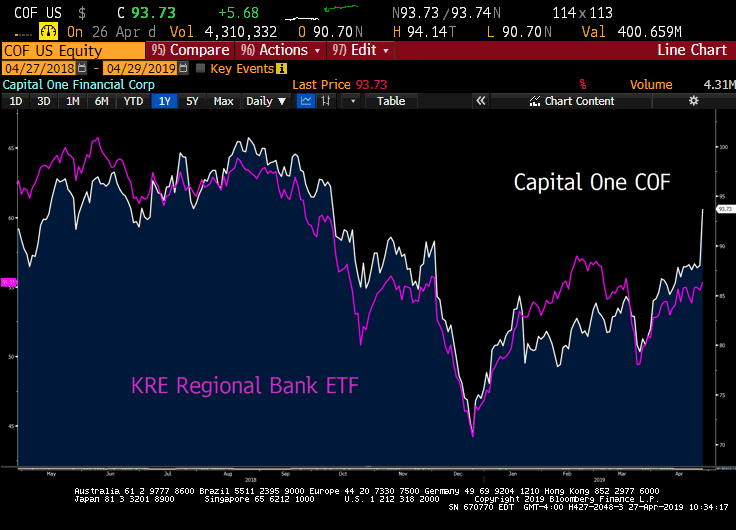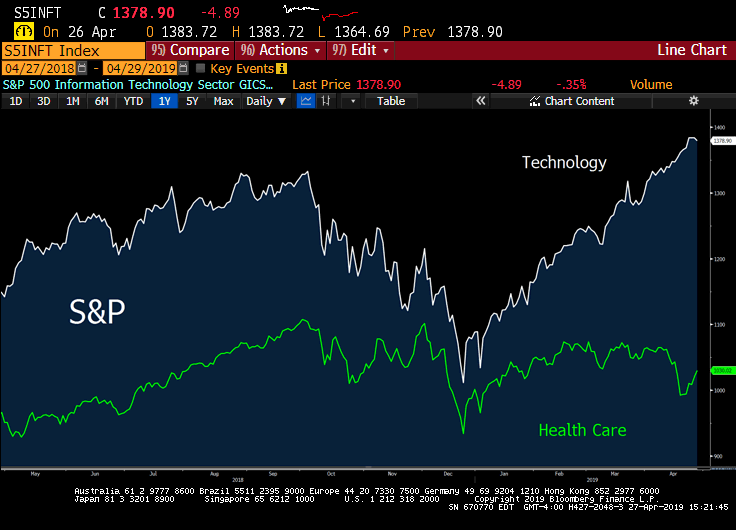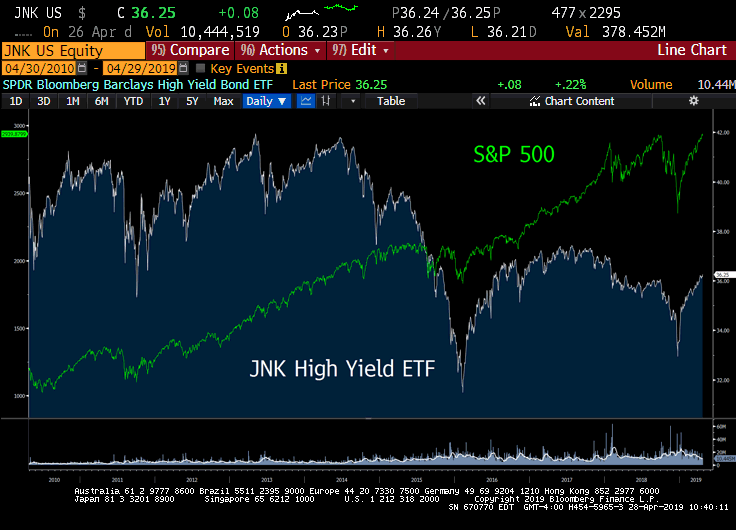Join our Larry McDonald on CNBC’s Trading Nation, Wednesday at 3:05pm ET

Pick up our latest report on China here:
Don’t miss our next trade idea. Get on the Bear Traps Report Today, click hereIn our 21 Lehman Systemic Risk Indicator basket, consumer credit is an important component. In any late cycle economic slowdown, charge-offs at banks, or credit write-downs must be monitored closely.
With this in mind, Capital One COF is an important bellwether to keep an eye on – they have a heavy hand in the consumer credit space. From Q1 2006 to Q1 2008, COF equity was 55% lower, she was screaming, “Houston we have a problem.”
Today, there’s a far different picture (below). Shares of Capital One surged nearly 5% Friday after the bank reported first-quarter results ahead of Wall Street expectations. The company reported first-quarter adjusted net income of $2.90, topping analysts’ expectations of $2.68 in the period. Adjusted revenue of $7.08 billion was also above Wall Street’s $7.01 billion expectations. Revenue increased 1% year over year while non-interest expenses decreased 11% to $3.7 billion in the period.
They scored Q1 2019 net income of $1.42B or $2.86 EPS (earnings per share), compared with $1.33B or $2.62 EPS in Q1 of 2018. We have an eye on provisions for credit losses, which rose 3% sequentially, or 1% year-over-year, in Q1 to $1.6B, but charge-offs remained relatively flat.
The company’s management sees “degradation” in customer credit quality. Overall, COF’s 1Q U.S. card charge off rate was 5.05%. While industry charge off rates rose to 3.85%, the highest since 2Q12. There are clearly some red flags pointing toward problems approaching the credit-card industry. A look at loans thirty days past due, a warning of future write-offs, surged at all seven of the largest U.S. card issuers.
There’s been a “degradation” in credit quality for some customers, per Richard Fairbank, Capital One’s CEO. The company is the third-largest card issuer in the USA. Fairbank said some customers with negative credit events during the financial crisis are now seeing those problems disappear from their credit-bureau reports.
“In general, we have been contracting credit policy at the margin and tightening,” Discover CEO Roger Hochschild said on a conference call this week. American Banker noted, some credit card companies are closing inactive accounts and slowing down the number and size of credit-line increases for both new and existing customers. Consumer credit is contracting, slowly shrinking, a tightening of financial conditions relative to recent years in our view.
Capital One, leaving Regional Banks Behind
 Capital One COF was a standout this week, we noticed significant divergence to the upside relative to regional bank equities. A short squeeze was in play in our view, short interest in COF shares rose to nearly 6m shares in Q1, up from 3m shares short in September 2018. Strong earnings results were the driver of the squeeze, the company also put forth initiatives to boost margins as it lays out a path to become more efficient. It’s important to note, few stocks actually lost too much ground in Financials as the sector was firm this week but trust bank State Street STT was the worst performer. Organic growth at Trust Banks is facing a number of headwinds.
Capital One COF was a standout this week, we noticed significant divergence to the upside relative to regional bank equities. A short squeeze was in play in our view, short interest in COF shares rose to nearly 6m shares in Q1, up from 3m shares short in September 2018. Strong earnings results were the driver of the squeeze, the company also put forth initiatives to boost margins as it lays out a path to become more efficient. It’s important to note, few stocks actually lost too much ground in Financials as the sector was firm this week but trust bank State Street STT was the worst performer. Organic growth at Trust Banks is facing a number of headwinds.
Winner and Losers
 The driving theme for the week across asset classes may have been the increasing emergence of relative value trades even as the S&P 500 Index climbed to a new all-time high. To be sure, being ‘long & strong’ has paid off for US stock investors again in April — the S&P 500 is up over 3.5% for the month. But April has also brought even greater returns from relative trades such as long Tech/short Healthcare or long the dollar vs. the euro over the past week.
The driving theme for the week across asset classes may have been the increasing emergence of relative value trades even as the S&P 500 Index climbed to a new all-time high. To be sure, being ‘long & strong’ has paid off for US stock investors again in April — the S&P 500 is up over 3.5% for the month. But April has also brought even greater returns from relative trades such as long Tech/short Healthcare or long the dollar vs. the euro over the past week.
Stocks Back on their Highs without Junk Bonds
 Stocks are partying like it’s 1999, while junk bonds are showing signs of cracking. We’re looking down the barrel of a high pace of credit rating downgrades. Per S&P Ratings this year, the ratio of downgrades to upgrades is the worst since 2016’s energy price collapse, back then oil was $26 vs. $64 today. We’re seeing a sharp breakdown, a meaningful underperformance of poorer quality credits. Credit deterioration is picking up even with CCC high yield index up +10.1% YTD, Q4 loss was near -10%. If you look at the frequency of bonds in a -20% or more hole (substantial sell-off in price), in 2019 we’re at double the pace of 2017 in terms of blow-ups in the CCC corporate bond space.
Stocks are partying like it’s 1999, while junk bonds are showing signs of cracking. We’re looking down the barrel of a high pace of credit rating downgrades. Per S&P Ratings this year, the ratio of downgrades to upgrades is the worst since 2016’s energy price collapse, back then oil was $26 vs. $64 today. We’re seeing a sharp breakdown, a meaningful underperformance of poorer quality credits. Credit deterioration is picking up even with CCC high yield index up +10.1% YTD, Q4 loss was near -10%. If you look at the frequency of bonds in a -20% or more hole (substantial sell-off in price), in 2019 we’re at double the pace of 2017 in terms of blow-ups in the CCC corporate bond space.
Bonds: US CCCs in Q1
Loss of 10% or More: 8.2% of the Universe
Loss of 20% or More: 5.1% of the Universe
Citi data


